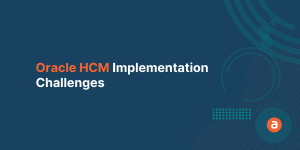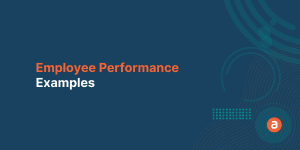Irrespective of the size of Enterprise, it is a must to measure employee productivity in order to achieve a higher growth rate. Businesses that properly gauge employee productivity can get higher profits, the long-run.
However, for large Enterprises, applying productivity measurement techniques is not that easy. So, it is wise to understand the basics of how to track the productivity of your employees.
Why is it Important to Measure Employee Productivity?
Measuring Employee productivity is important because it helps you to
- identify who is working and who is not
- gauge an employee efficiency
- increase overall productivity
- improve both the quantity and quality of work
But not all methods or ways of measuring employee productivity will work, it varies based on industries and also tasks. Nonetheless, we have picked up the most consistent approaches that will help you to measure employee productivity and improve the same.
In this blog, we will be looking at some best practices that will help you to measure employee productivity.
How to Measure Employee Productivity?
The top 7 best practices for measuring employee productivity in detail and few significant tips that help to increase productivity.
- Set a baseline
- Define and measure the tasks
- Establish benchmarks and targets
- Account for the human element
- Keep a value on quality metrics
- Track and monitor individual progress
- Identity the right measurement tool
1. Set a baseline
To get started with employee productivity measurement, you must establish a baseline (a starting point). It helps you to determine the expected outcome for each role or position and also to accurately track individual or team productivity.

For example, consider Customer Services – find out the number of queries that your team resolves in a day, and divide the same with the total number of employees to identify the baseline.
Once you have clarity on the baseline, it helps your business to set an average (or consistent) deliverables. It not only creates a reference point to measure employee productivity but also holds your employee accountable.
2. Define and measure the tasks
Companies have different job roles & positions and it is impossible to use the same employee productivity measurement metrics to all of them.
For example, if you are measuring the productivity of an app developer, he/she spends more hours on research. So, in this case, you cannot evaluate their performance based on the lines of codes they’ve written.

You must define measurement metrics based on the functions of the job. You must measure the tasks, not the hours. Based on the type of role or position, the complexity of the task varies.
So, it cannot be measured based on hours spent rather define some useful measurements like,
- How many orders are dispatched?
- How many tasks are completed?
- How quickly customers are served?
- How many sales calls are done?
- How many invoices are sent out?
Note:- Complex tasks involve more knowledge with many variables.
3. Establish benchmarks and targets
Productivity targets and benchmarks vary for different industries. Certain jobs have pre-defined targets and some don’t. You must set targets and benchmarks before productivity measurement to get correct data points.

For example, let us take a Call Centre – in this case, an employee cannot control the number of calls he/she receives. So, when you measure employee productivity considering all received calls it is a huge mistake.
4. Account for the human element
The human element always remains a core problem to productivity. If your employees don’t want to work, productivity measurement and optimization become unwanted.
If it is a production company, the employee simply iterates tasks within the machines. In this case, productivity measurement data can more easily be calculated and used.
But, in the scenario of Knowledge economy – where growth is dependent on the quality, quantity & information accessibility rather than the means of production
Here outcomes are the series of creative decisions, also an employee’s knowledge and expertise are the means of production. That’s the human element we are talking about.

According to the McKinsey Global Institute, Employee Productivity improves by 20% to 25% in organizations with connected employees.
Factors like Employee Engagement, Employee Onboarding, and many come into play for making your employees stay connected.
Note:- Digital Adoption Platform (DAP) helps you to increase Employee Productivity and Performance.
5. Value ‘quality’ as part of your metrics
Quality of work is always as important as quantity. While measuring employee productivity, timely completion of tasks with high standards must be considered.
For example, consider an employee working as a customer service agent. Assume he/she answers 50 calls a day. You must measure employee productivity by not only considering the 50 calls but also take client satisfaction into account.

Consider situations like:
- A developer writes only a few lines of code, but it’s 3 times as good as the others
- An employee completes half as many tasks as another, but with 100% accuracy
- A doctor sees only a few patients as another but with 5 times positive outcomes
Having metrics for quality is highly important in the above-mentioned scenarios.
6. Track and monitor individual progress
Tracking individual progress is an important component in measuring employee productivity E.g. TMetric time tracker. It helps you to find the employees who are high performers and underperformers. You must also take presenteeism and absenteeism into consideration.

Presenteeism is when employees are physically present in the workplace but are not fully functioning because of an injury, illness, or other medical condition. Absenteeism is an employee’s habitual or intentional absence from work.
In many Enterprises, employers focus on absenteeism when in fact presenteeism needs more attention. Though both harm your productivity, in the case of presenteeism your employees are disengaged and more likely to make mistakes.
Employee disengagement has always been a problem. According to Gallup, more than 13% of U.S. employees are actively disengaged at the job.
7. Identity the right measurement tool
Having discussed the importance of measurement metrics, it is important to select the right employee productivity measurement software. Not all products or applications come with employee tracking & monitoring features. You must leverage some additional tools to do the job.

A Digital Adoption Platform (DAP) helps a lot in measuring employee performance. DAP allows you to create content without any codes. It also provides On-screen guidance that makes your employees’ job easier and effective. Automates mundane tasks and increases your employees’ productive hours.
For example, consider some unusual or extenuating circumstances. Like the current pandemic scenario, where your employees are working remotely. Employee productivity measurement of remote employees is highly tedious without proper tools.
To avoid such challenges and to make your employee productivity measurement easy, a Digital Adoption Platform is the best and the most cost-effective investment that you can consider.
Challenges in training, onboarding, monitoring, employee engagement, and in-app support can be easily resolved by investing a small bomb in the modern Digital Adoption Platform like Apty.
If you wish to learn more about how Apty can help you overcome employee productivity issues, you can get started with your free trial right away.













